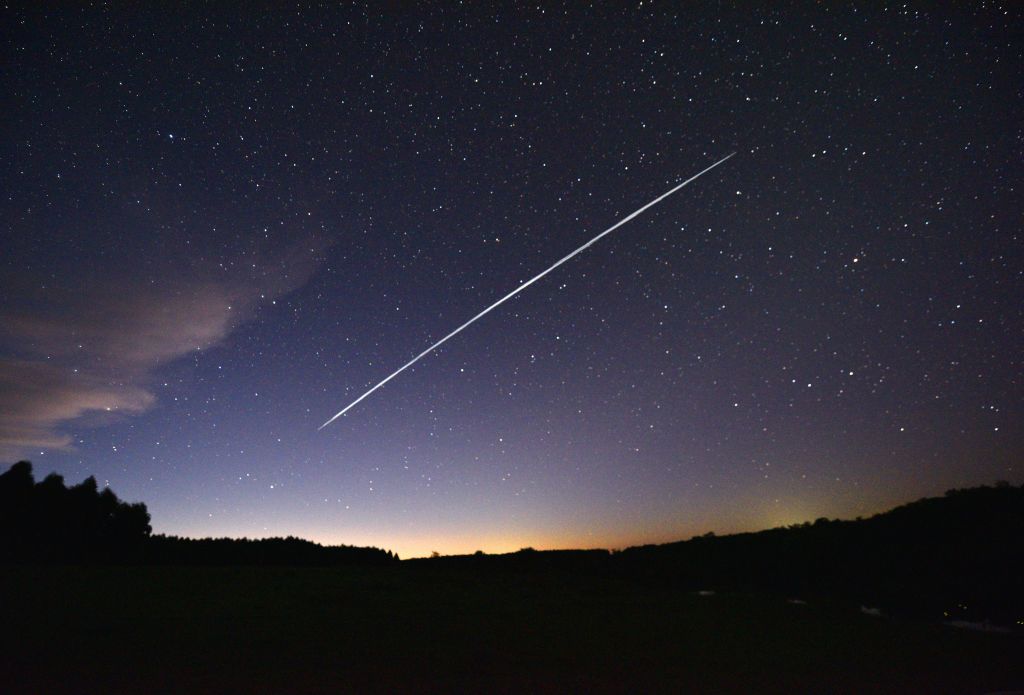Amazon is set to launch its first prototype satellites.
Amazon is set to launch its first satellites into low-Earth-orbit today, 6 October, and the event can be watched live online.
The prototype satellites are called KuiperSat-1 and KuiperSat-2, and are set to launch on a United Launch Alliance Atlas V 501 rocket from Space Launch Complex-41 at Cape Canaveral Space Force Station, Florida.
The 2-hour launch window opens at 14:00 EDT (18:00 UTC / 19:00 BST)
Project Kuiper is Amazon’s project to launch thousands of satellites into Earth orbit to provide broadband to communities around the world that have little or no internet access.
But many astronomers and campaigners are concerned about the effect that satellites have on our view of the night sky.
Astronomers – both professional and amateur – argue that an increasing number of satellites is hindering both appreciation of the night sky and astronomical research.
The satellites launched today will be deployed 500km above Earth and are the first of over 3,200 satellites Amazon plans to launch through Project Kuiper over the next 6 years.
But, says Amazon in a statement on its website, “Poor connectivity means limited access to modern communications, education, health services, and other important resources.
“The network will serve a wide range of customers, including schools, hospitals, businesses, government agencies and others operating in places without reliable connectivity.”

First satellite test mission
Amazon says today’s launch is the “first satellite test mission” for Project Kuiper.
The tests will be used to gather data to inform how effective Project Kuiper is at providing network coverage.
It will also be used to test launch procedure, satellite processing and mission operations.
“We’ve done extensive testing here in our lab and have a high degree of confidence in our satellite design, but there’s no substitute for on-orbit testing,” says Rajeev Badyal, Project Kuiper’s vice president of technology.
“This is Amazon’s first time putting satellites into space, and we’re going to learn an incredible amount regardless of how the mission unfolds.”

Satellites: a growing concern?
There is a concern among many groups that the launch of artificial satellites is impeding our view of the night sky.
Satellites can affect stargazers’ enjoyment of the night sky, but can also impede professional astronomers’ ability to carry out research.
For example, 10 September 2022 saw the launch of the BlueWalker 3 (BW3) prototype for a constellation of around 100 telecommunications satellites called BlueBird.
Following the launch, the International Astronomical Union’s Center for the Protection of the Dark and Quiet Sky from Satellite Constellation Interference (CPS) found the satellite reached around magnitude 1.0 at its brightest.

That’s similar to Antares, the 15th-brightest star in the sky.
And BW3 uses the same radio frequencies as terrestrial mobile phones.
“Frequencies allocated to cell phones are already challenging to observe in, even in the radio quiet zones we have created for our facilities,” says Philip Diamond, director general of the Square Kilometre Array Observatory.
“New satellites such as BlueWalker 3 have the potential to worsen this situation and compromise our ability to do science, if not properly mitigated.”
There has been announcement of new software that can help Hubble Space Telescope edit out satellite interference, for example, but clearly the astronomical community has its reservations regarding the launch of satellite constellations.

How to watch today’s Amazon Kuiper Project launch
You can watch the launch of the Amazon KuiperSat-1 and KuiperSat-2 via the United Launch Alliance YouTube channel below: